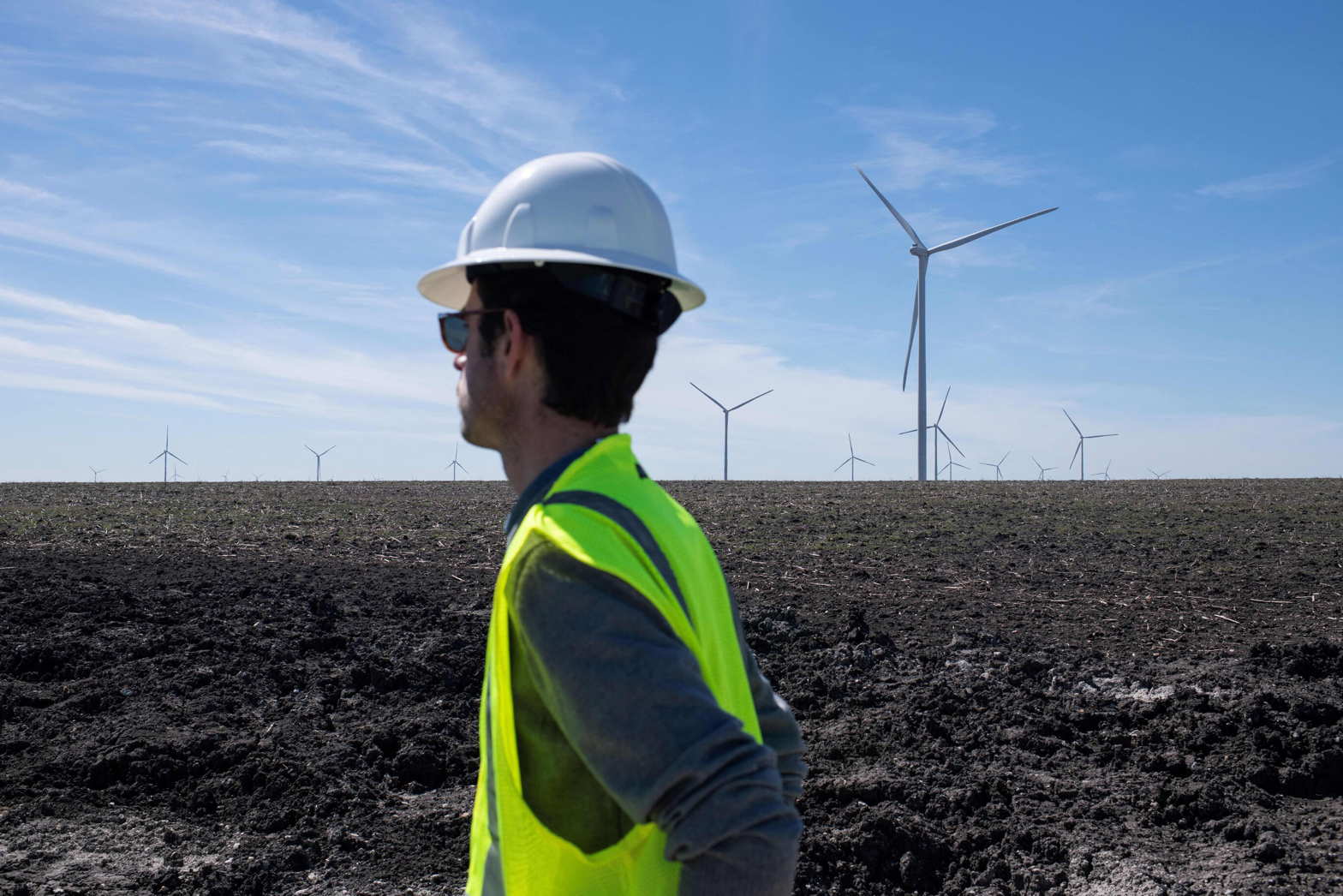Here’s a state-by-state tally of the leaders and laggards for wind, solar and other renewable energy in 2022.
A new batch of data about the country’s electricity generation shows the increasing dominance of one state as the clean energy leader.
No, it’s not California.
It’s Texas.
This isn’t new. Texas has produced more gigawatt-hours of electricity from renewable sources than any other state for several years running, thanks largely to wind energy. Now, the state is expanding its lead by continuing to be the county’s leader in wind energy, by a mile, and quickly closing the gap on California on utility-scale solar power.
In 2022, Texas generated 136,118 gigawatt-hours from wind and utility-scale solar, most of it from wind. The runner-up was California with 52,927 gigawatt-hours, most of it from utility-scale solar, according to the Energy Information Administration.
Some perspective: Texas’ total from wind and solar is huge—more than either New York or Ohio generated from all electricity sources. But Texas is also the country’s leader in overall electricity generation, and it’s the leader in generation from gas and coal, so the total for wind and solar, while gigantic, was just 34.3 percent of the total from all sources.
Iowa and Oklahoma are among states with small populations that are huge generators of wind energy, ranking third and fourth in this list of leaders in wind and solar.
Kentucky is near the bottom, despite having a lot of available land. But this should change as several large projects are in development.
If we zoom out to include all renewable electricity—like hydropower, biomass and others—then Texas is still the leader with 138,538 gigawatt-hours, followed by Washington, whose 91,148 gigawatt-hours mostly came from hydropower, and then California, which also has a lot of hydropower, with 89,473 gigawatt-hours.
Now let’s zoom out one more time to include all carbon-free electricity sources, which includes renewables and nuclear. The leader, again, is Texas, with 180,145 gigawatt-hours, followed by Illinois with 124,055 gigawatt-hours, most of it from nuclear.
The country got 39.7 percent of its electricity from carbon-free sources last year, which was the sum of 21.5 percent from renewables and 18.2 percent from nuclear..
Just about any way you slice the numbers, Texas is on top.
“Texas has the best combination of wind and solar resources in the U.S.,” said Eric Gimon, senior fellow at the think tank Energy Innovation in San Francisco. By that, he means the state has high winds and bright sun.
But Texas is more than just resource-rich. It also has vast amounts of developable land and a regulatory system that is friendly to renewable energy developers, he said.
The state’s dominance in renewable energy is in spite of leadership that is closely tied to fossil fuel industries and has been hostile to cleaner options. To see this in action, just look at the aftermath of storms or blackouts in which leaders rush to blame renewables.
“States are scrambling to attract this kind of investment” in renewable energy, said Doug Lewin, president of Stoic Energy, a clean energy consulting firm in Austin. “And here, Texas has some subset of policymakers that seem hell bent on slowing it down.”
But this sentiment is more pervasive in politics than it is in the business community, he said. Some of Texas’ largest oil and gas companies are also investing in renewable energy, either to sell it or to use it to power their own operations.
“It doesn’t look like as much of a cage match as some people in the capitol, you know, who are watching too much Fox News, think it is,” Lewin said.
But he laments that the state isn’t doing more to make the most of the opportunity it has with renewable energy. He would like to see the construction of more transmission lines to deliver power from wind-rich parts of the state to the major population centers. Also, he would like to see state officials do more to attract solar and wind power manufacturers.
The larger point is that every state needs to figure out how to get the most from an energy transition in which the trend lines are clear.
Another important part of the conversation is rooftop solar.
EIA tabulates the output for small-scale solar systems, which are largely rooftop systems and are a separate category from utility-scale solar.
If I were to add small-scale solar to the state totals, Texas would still be ahead, but the lead wouldn’t be quite so big. California dominates in small-scale solar with 23,094 gigawatt-hours, which is about seven times the number from Texas.
To make a swift transition away from fossil fuels, the country is going to need all of the carbon-free resources it can get, and to design a grid in which all the resources can work together.
Think of the charts above as the “before” picture. The states with the most development still have a lot of room for growth, and the states that have lagged have an opportunity to get their act together.
Other stories about the energy transition to take note of this week:
Biden’s Clean Energy Factory Jobs May Elude Union Workers: Since the passage of the Inflation Reduction Act, a large majority of the investment in new manufacturing has taken place in states with laws that make it harder for workers to unionize, as Nichola Groom reports for Reuters. With high-profile examples of new plants in Georgia and South Carolina, this underscores how the bill may be helping to change the map of industrial America, or helping to accelerate a change that was already happening.
Tesla Offers Another Price Drop on Multiple Models: Tesla is continuing to reduce prices, this time with price cuts to the Model S and Model X, part of an ongoing price competition as other automakers are rolling out new EV models to compete with Tesla, as Bailey Schulz reports for USA Today. She reached out to Tesla for comment, but her email bounced back because the mailbox was full, suggesting that the company is still pretty rotten at media relations.
Energy Department Finds Pressing Transmission Needs, with Interregional Links Offering the Biggest Benefits: The United States will need a 57 percent increase in the number of gigawatt-miles of interstate power lines to support a transition to clean energy, according to a draft report released by the Department of Energy, as Ethan Howland reports for Utility Dive. The need for new lines is one of those urgent challenges that we’re going to be hearing a lot more about as the push to build wind and solar is running into the obstacles of not having enough lines to deliver the power.
Will the Feds Approve Any of the New Small Modular Nuclear Reactors?: Despite some encouraging signs, the companies developing a next generation of nuclear reactors face a long and expensive regulatory process to be able to build their products, as Eric Wesoff reports for Canary Media. Barring an overhaul of the regulatory system, the companies may be waiting until well after this crucial decade of the energy transition to be able to put their reactors into the field.
‘Green Hydrogen’ Would Squander Renewable Energy Resources in Massachusetts: Efforts by Massachusetts natural gas utilities to replace some of their gas supply with “green hydrogen” derived from renewable electricity would consume vast amounts of energy and offer few climate benefits, according to a report from a coalition of clean energy organizations, as my colleague Phil McKenna writes for ICN. This pushback against green hydrogen is part of a larger conflict over what the future holds for natural gas utilities in the transition to clean energy.
Construction Begins on a Controversial Lithium Mine in Nevada: Construction has begun at the Thacker Pass lithium mine in Nevada despite ongoing protests from tribes and environmental groups, as Gabriela Aoun Angueira reports for Grist. This open-pit mine would be the largest source of lithium in the United States, providing the metal for use in batteries for electric vehicles. The development of the project has helped to bring attention to some of the environmental concerns about producing the materials needed for the shift away from fossil fuels.
Inside Clean Energy is ICN’s weekly bulletin of news and analysis about the energy transition. Send news tips and questions to dan.gearino@insideclimatenews.org.




